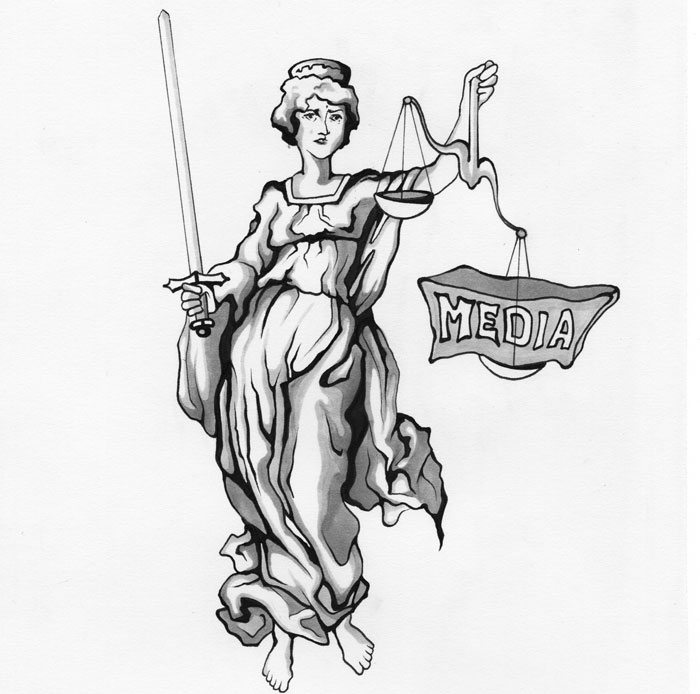Two major murder trials have caputred global attention: Luka Magnotta’s alleged murder of a Concordia student, and handicapped Olympic star Oscar Pistorius’ shooting of his girlfriend in South Africa.
The latter case has drawn huge headlines, with numerous outlets offering live television coverage from inside the courtroom.
The biggest problem with televising court proceedings—illegal in Canada—is the damage it does to the outcome of the trial. The behavior and testimony of witnesses and legal counsel is altered by the direct intrusion of electronic media. They behave differently in front of the camera, feeling pressure not just from the intensity of the courtroom but from the public and their friends, who are no doubt watching the proceedings. Moreover, in the Pistorius trial, some witnesses refused to testify because they did not want their voices projected and analyzed around the world—a fact that Pistorious’ lawyers will likely cite in their appeal.
Cameras publicize private information and cause harm to the lives of both victims and defendants. Grim details of the damage done by Pistorius’ hollow-point bullets were revealed to the masses; viewers saw the defendant and victim’s families get viscerally crushed by this. There is no reason why the public needs to watch these people become emotionally devastated, apart from the fact that it makes for compelling television. The families of the victims in these cases find their lives permanently changed, and many face fear of repercussions from the angered public.
The media, and specifically the 24-hour news cycle which requires constant updates, is certainly at fault, but allowing cameras to film the victim’s families and the defendant only serves to incite more public reaction and interest. As harmless as they seem, cameras inside courtrooms can irrevocably damage those fighting for their freedom. Defendants in high profile cases are increasingly analyzed by talking heads and the public alike, and can be found guilty in the court of public opinion simply because they look a certain way on television. No defendant in a high-profile case will be free of the images that portray their emotional responses to their verdict. Indeed, regardless of his eventual sentence, the image of Pistorius crying on the stand ahead of images of his triumphant athletic endeavors when people remember him. The effect on defendants by filming them at their most vulnerable moments is extremely dangerous, threatening the bedrock principle of the justice system, “innocent before proven guilty,” and hampering the very nature of a fair trial.
The justice system is not one to be trivialized and sensationalized. There is a need for transparency and freedom of access to the courtroom. Placing cameras in them to analyze the faces of broken families is horrid and visually portraying the witness stand presents harm to the possibility of a fair trial. However, there is no reason for this other than to drive media revenue, fill the airwaves, and satisfy the public’s craving to watch the lives of famous people crash and burn. Proponents argue that the public deserves to have these details publicized and that there is a need for absolute transparency in the courtroom; if they were in the defendants box, they might be singing a different tune.







